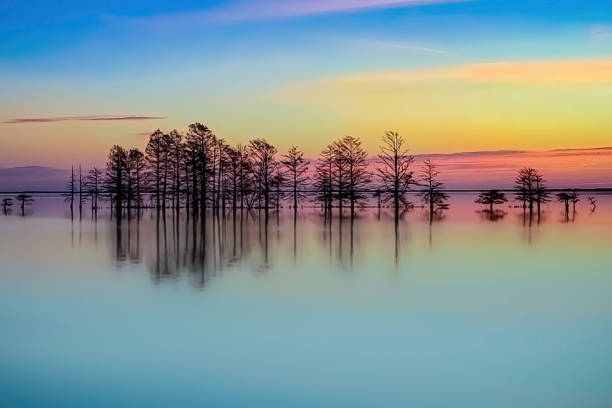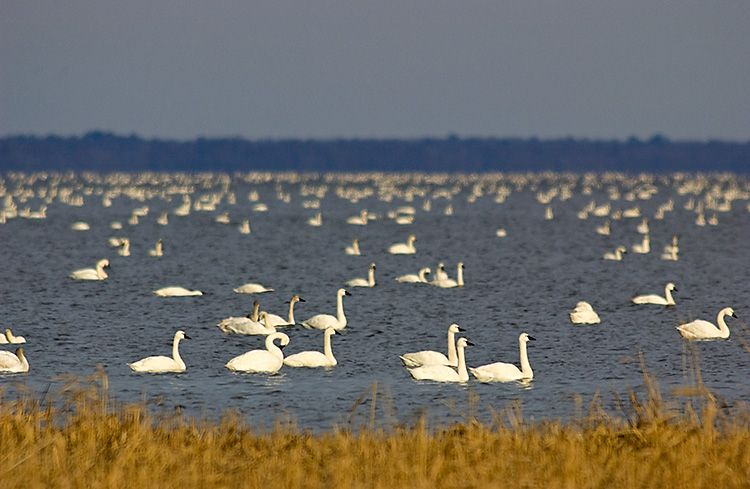Lake Mattamuskeet
According to Native American mythology, Lake Mattamuskeet was formed when a peat fire burnt, leaving a place that was full of water and fish. The lake has always been shallow, receiving its freshwater supply from creeks, rivers, and rainfall. In 1585, during one of Sir Walter Raleigh's surveying trips, English settlers came upon the Lake. Many colonists thought that the establishment of an Indian reservation was necessary due to the ongoing antagonism between Europeans and Native Americans. The Core, Cotechny, and Mattamuskeet Indian tribes each had one in 1715.
Many people in the 1800s called for draining the tiny lake because of its abundant nutrients. The lake was drained to approximately half its original extent in 1837 while it was owned by the State Literary Board. From the lake's southern end to Wysocking Bay in Hyde County, a seven-mile canal was constructed. There was more cropland available when the lake's size shrank to 55,000 acres.
The lake was emptied three times between 1916 and 1926. The lake was dry for five years after the third. Soon after, in 1932, the New Holland Company stopped pumping because the drainage operations were too expensive and difficult.
The lake was managed by the Mattamuskeet Wildlife Refuge in 1934 and belonged to the United States government. The lake is now a haven for birds making their way up the Atlantic coast and a popular tourist spot, with 50,000 tourists annually. The lake is a well-liked hunting and fishing destination. The number of ducks and geese varies by thousands every year. With a maximum depth of five feet, the lake is still relatively shallow and is popular with conoers.
Location: Hyde County
















